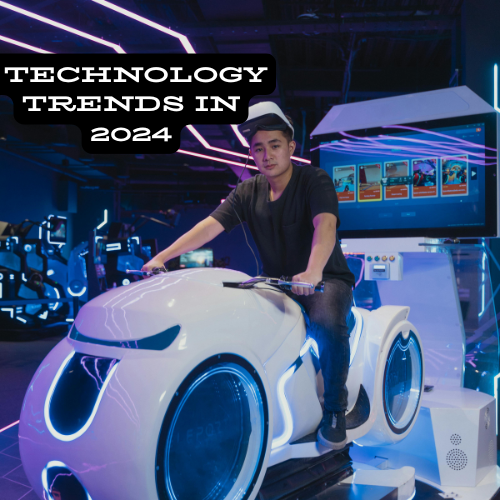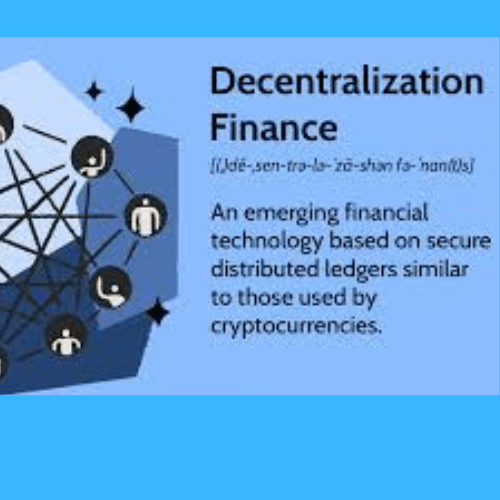We delved equally into 2024, just as technological development went along with the wave at an unprecedented, greatly high speed of restructuring sectors and changing the face of daily life where new vistas open. To help with this, artificial intelligence comes in and drives the innovation and cutting-edge development of technologies in the renewable energy sector among other innovative solutions. We bring to you within this article ten trends set to lead technology in and onwards for the next year. Read more
It’s considered the more sophisticated cousin of artificial intelligence, but generative AI has really been center stage this year. Unlike traditional AI, which is wired to be able to identify patterns from the existing information and predict what is most likely to happen next, this technology creates new content, from articles to images, and even music—that versatile, using deep learning models that are capable of producing near-professional copies of human creativity.
Generative AI, on the other hand, lies at the core of an immense number of applications in creative industries, has the capability to provide automatic content generation, and has even been applied in drug discovery by translating and generating completely new molecular structures. Diversified, high-quality output is forward to have deep implications for marketing, entertainment, and scientific research; generative AI is the state-of-the-art feature attributed to developing the latter.
Some years ago, ideally thought to be some futuristic technology, quantum computing will be a step ahead further in 2024. These very powerful computers ideally execute calculations at amazing speeds using the principles in quantum mechanics, therefore out of reach by classic computers. Overall, this propels the race against the huge tech and research centers in developing quantum processors with large qubit counts and better error correction abilities.
Quantum computing has great potential to alter cryptography, material science, and simulations of complex systems—all the way up to medicine simulations in general and molecular interaction in particular. If quantum technology keeps on advancing, it will definitely solve other problems that are now intractable for a classical computer, including being a milestone in computational power.
The metaverse, or shared online space, is brought about by the convergence of near, but virtual, reality and physically operated versions of virtual reality. Currently, it lies in the nascent stage, set to go widespread only in 2024. It is no wonder that already the significant tech firms had buckled up in the chase of this idea, making the user interlinked virtual spaces so that one can stay and play, work, or socialize in it.
To be more specific, what will really push the metaverse forward is the next wave of advancements in things like AR and VR, including life-like avatars, an advanced sense of spatial computing, and much better user interfaces. This is the kind of technology that can change virtually everything, from the way people are entertained and taught, to the way that it is variously applied to the very basic factor of the way in which people work to remotely attacking new ways of consuming digital content to how new ways of getting engaged and collaborating within the virtual spaces are laid out for the common man.
Although the 5G networks have accelerated in their rollout, now this year, 2024, the next wave is being looked at with the introduction of 5G+ and debate on 6G in an infant stage. More speed in data flow, lesser latency, and more connections are what the 5G networks will be built for—the power for a new series of new and disruptive applications around autonomous vehicles, smart cities, and a new set of connected objects.
On top of all this stands the emerging 5G+ technologies that are delivering even greater speeds and capacities. On the same note, with active research in 6G underway, it would probably consider the most disruptive changes of all: terabits per second speed and advanced integration with AI. These developments are likely to change even further how we connect and interact with technologies.
Biotech is one field that changes by leaps and bounds, and the major pursuits for the year 2024 are going to lie within personalized medicine. Personalized medicine is a branch of study that makes use of a person’s genetic information together with his environment and lifestyle in tailoring a medical treatment to suit each patient as an individual, to bring in better outcomes and reduced side effects.
They also contain gene editing technologies—for example, the CRISPR process of editing—which can realize very fine modifications to the human genome. AI will also converge with biotechnology in areas like drug discovery and diagnostic tools that will make medicine very tailored and powerful. Treatments through such technologies will be offered for a wide array of conditions, touted to change the whole face of healthcare by being more effective and targeted.
Sustainable and Green Technologies
It gets green and sustainable technologies into the 2024 agenda, so this can be taken with urgency to allow possibilities for reducing carbon emissions and use of fossil fuels, with innovations like improved solar panels or better wind turbines.
Added to energy storage, new technologies, next-gen batteries: on the heels of the aforementioned, follow these, which make efficiency and access to better renewable sources. Other investments in green technologies go towards green agriculture and eco-friendly processes of manufacturing. Such will be so crucial in meeting the objectives set pertaining to the environment and making a better future.
Edge Computing and IoT Integration
Edge computing is bound to get a momentum boost in 2024 because it congregates data processing very close to the cloud, thereby lowering the latency and usage of bandwidth. Consequently, it is best applied in applications requiring real-time processing, such as those in autonomous vehicles and smart cities.
Edge computing has incredibly energy-efficiency enhanced and increased the performance and responsiveness of the internetted systems of IoT devices. For example, it empowers IoT sensors to independently process data and make decisions on the spot, thus improving app performance on the fly, for instance, in Industrial Automation or Smart Home systems.
DeFi and Blockchain
Blockchain technology never stops morphing. The main focus this fall of 2024 falls in the DeFi area. DeFi platforms are those developed in blockchain to provide financial services in the absence of intermediaries—banks. For instance, there are lending and borrowing or decentralized trading platforms on blockchains.
Changes in this area attempting to provide improved scalability, security, and interoperability, among other relative inefficiencies. These are alterations that give birth to blockchain applications throughout the realms of commerce, supply chain, and digital ID validation.
Tools for HR-AI Collaboration
This era will then witness a growing focus on allowing better collaboration between humans and AI, the latter being increasingly sophisticated. Technologies and platforms enabling seamless interaction between humans and AI are starting to debut in 2024.
Other advanced interfaces include natural language processing, AI-enabled decision support systems, and cobots. It plays a very critical role in the enhancement of competencies in humans so that workflows take place seamlessly. In this way, it becomes possible for human users to draw more aids driven by AI towards even more complex tasks and decision-making.
Paramount among the concerns has been, however, cybersecurity, as the reliance increases on digital systems. In 2024, the innovations in cybersecurity will focus less on threats and more on mechanisms and mechanisms for protection of threat development.
Primary among these are artificial intelligence and machine learning, which detect and react to the cyberthreat in real time; the betterment of technologies dealing with cryptography to secure sensitive data; the impetus on zero-trust adoption in securing models; and incident response strategies that avert increased risks and secure resilience from threats across an evolving threat landscape.
The emerging technology trends in 2024 promise to change how we live, work, and relate to the world. Innovations in renewable energy, quantum computing, and artificial intelligence stand to work as game-changers and will unleash a fresh wave of change in a relentless industry. Innovations under development only cause disorientation in people and organizations; therefore, they must be so aware of the trends so to enable them to sail through the rapidly changing technological environment and at the same time get prepared for the future.
Understanding these and what they forebode can only really open up the avenues of newer progress and empathetic solutions to perhaps some of the graver problems the world is facing. Considering all these trends in technology, the future seems very much open to great and exciting possibilities with transformational potential.










